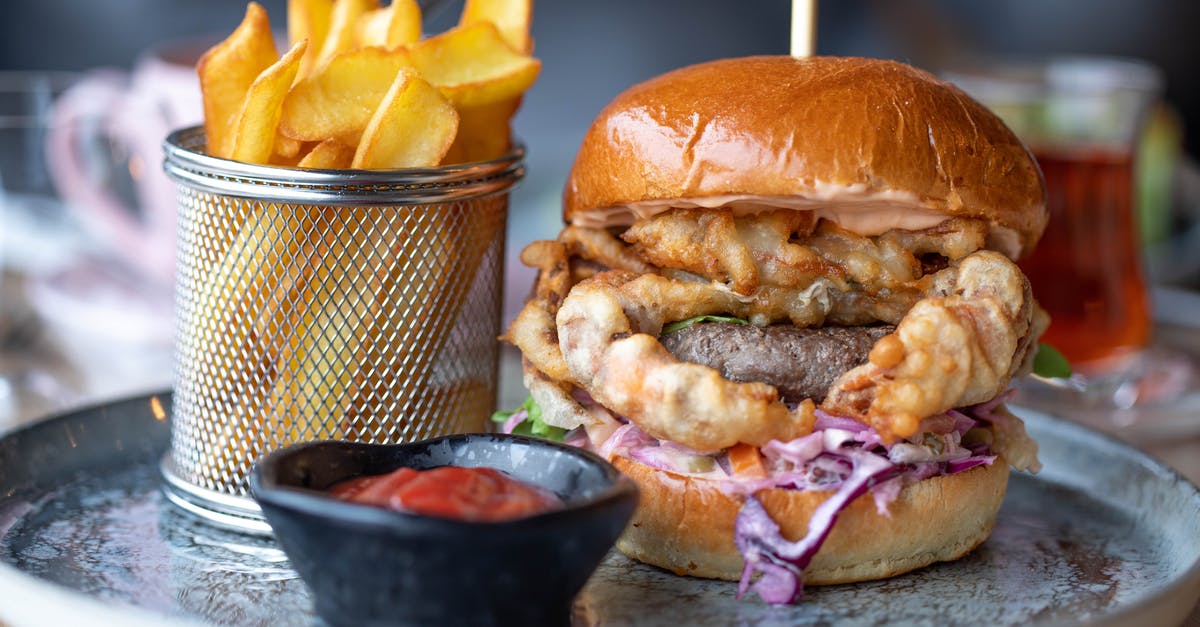Minimum amount of fat in Roux

Most (all) recipes I know talk about 50/50 butter/flour for roux. However, at home I'm using something like a 40/60 butter/flour mix. It's thicker, but it works.
Does anybody know what the absolute minimum butter content is for roux, so it will thicken with a low fat content. As far as I understand, the fat is there to align the starch molecules.
Cheers
Best Answer
The purpose of using a roux, as opposed to just plain flour, is to improve the dispersal of starch molecules in the sauce. If you just toss a bunch of flour into a simmering sauce - or do the reverse, pour hot liquid onto dry flour - then you'll immediately start getting gross glutinous lumps and will find it nearly impossible to smooth them out.
Starch is not actually soluble in fat; instead the fat coats the starch molecules, making it difficult for them to clump together when incorporated into a sauce. Making a roux out of the flour (and making sure to give the sauce a really good whisking after incorporation) basically helps to ensure an even distribution of starch so that your sauce ends up smooth, not lumpy.
So to answer your question, the minimum amount of butter (or other fat) you need is however much it takes to fully incorporate the flour. If you've still got dry clumps, you haven't used enough fat. More fat is okay, but if you don't use enough then you'll suffer some of the same lumpiness as if you didn't use a roux at all.
I'm not sure if there's a magic number - it's going to depend on the specific flour you're using and the specific fat. Even if you narrow it down to, say, all-purpose flour and butter, it can depend on the brand of flour, the fat content of the butter, and whether or not the butter has been clarified (which, if you have the time and patience, it should be).
The 1:1 ratio (by volume or mass) gives you a pretty decent safety margin; you won't need more than that, but it's also not so much that it'll make your sauce greasy. But you really don't need to measure it out at all; I don't, I just add fat while stirring until the flour is fully incorporated. Sometimes I might be more generous with the butter simply for flavour purposes.
Bottom line, it's really pretty obvious when you haven't got enough fat. If it looks good, it is good, and after a few sessions without the measuring spoons, you should very quickly get a feel for how much fat you really need.
Pictures about "Minimum amount of fat in Roux"



Quick Answer about "Minimum amount of fat in Roux"
The 1:1 ratio (by volume or mass) gives you a pretty decent safety margin; you won't need more than that, but it's also not so much that it'll make your sauce greasy. But you really don't need to measure it out at all; I don't, I just add fat while stirring until the flour is fully incorporated.What is the correct ratio of fat to flour for roux?
The standard ratio of fat to flour is 1:1, but you can adjust the consistency to get a moister mixture. On the flip side, you don't want it so dry that it looks like sand. Roux is cooked to varying degrees depending on what you're using it for.Why do you need fat in a roux?
The fat you use in a roux has a direct effect on the roux's flavor. Butter adds rich dairy notes, while lard offers a subtly funky animal richness. A neutral vegetable oil is just that: neutral.What is the proportion of butter and flour for roux?
The roux. You will want 1 tablespoon of unsalted butter to 2 tablespoons of plain white flour. If you want to be even more precise, you want 1 weight unit of butter to 1 weight unit of flour (say, 10 grams - 10 grams), but I find that the 1 Tbs - 2 Tbs ratio works fine and is much easier to measure.When making a roux if I have four ounces of fat How much flour will I need?
To make a basic roux start by measuring, by weight, the amounts of fat and flour desired. It's a one to one ratio (e. g. 4 ounces of fat and 4 ounces of flour equal 8 ounces of roux).How Much Fat While Cutting?
More answers regarding minimum amount of fat in Roux
Answer 2
The fat is there to more easily incorporate the flour and add flavour. You can thicken liquids without added fat, it's just more difficult to avoid lumps (and less flavourful). In addition to a smoother mouthfeel, the butter can help brown the flour (for a dark roux) and adds salt and other tasties.
Sources: Stack Exchange - This article follows the attribution requirements of Stack Exchange and is licensed under CC BY-SA 3.0.
Images: Anna Tarazevich, Valeria Boltneva, Dmitriy Ganin, Artem Podrez
